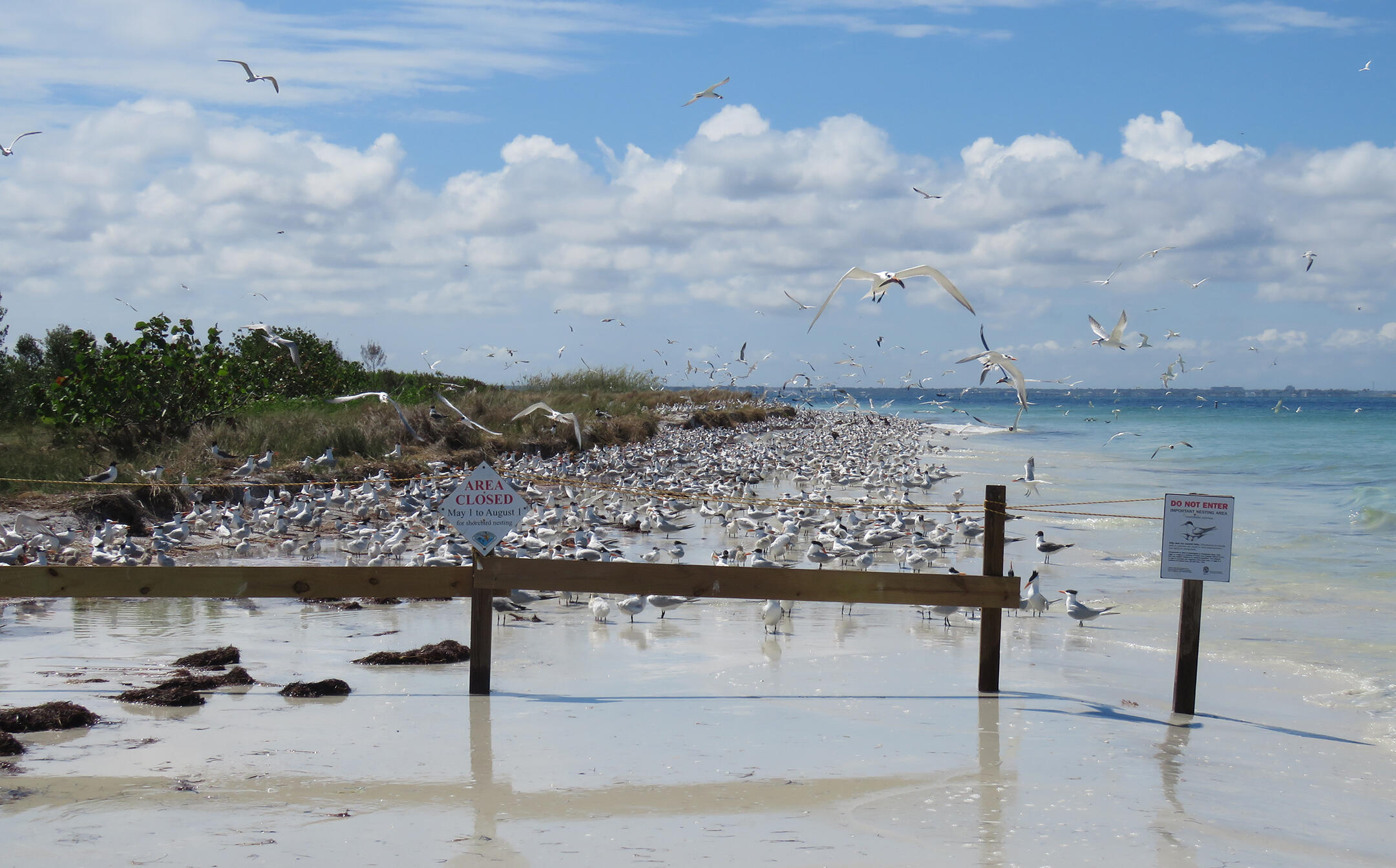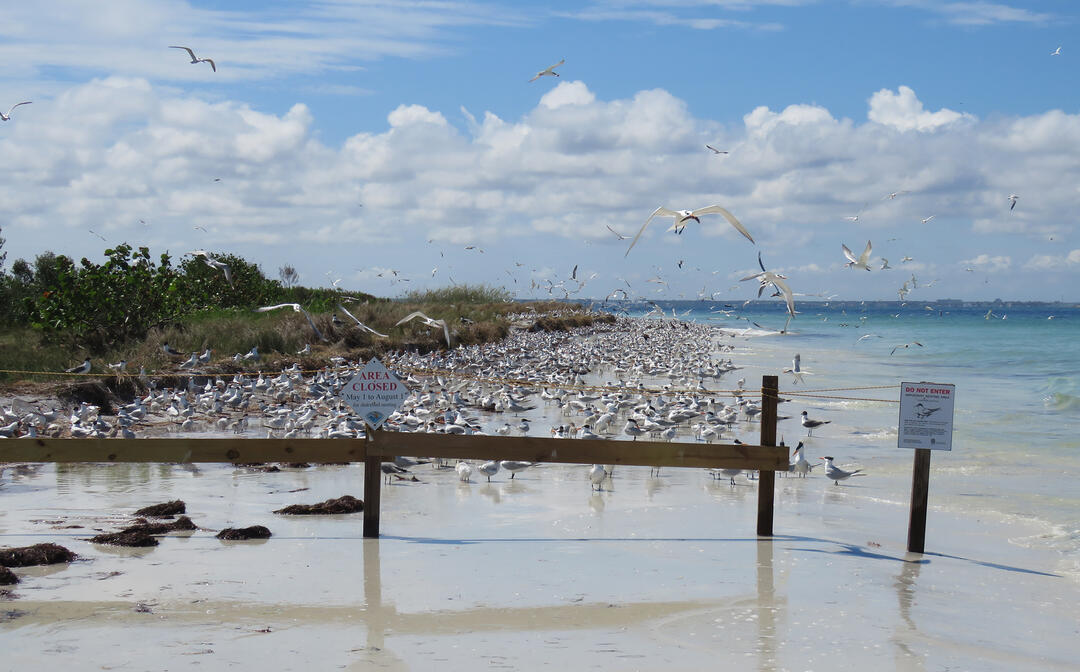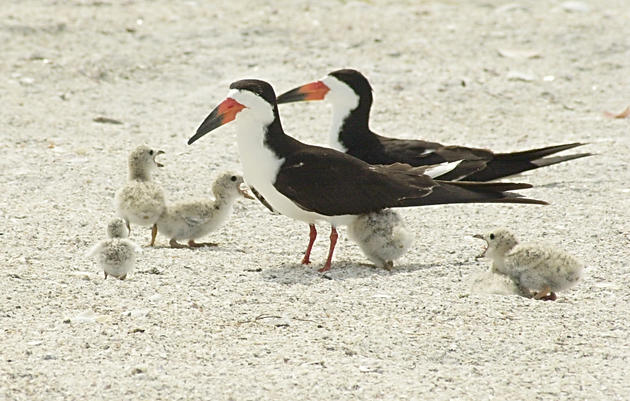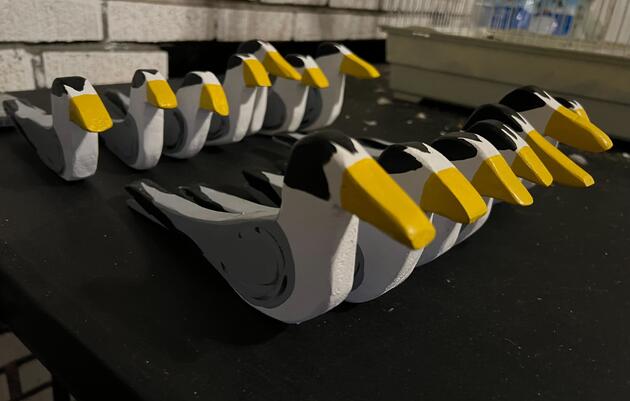Noise Notification: LOUD! Repeated, long-term exposure to sounds at this level can damage your hearing.
One doesn’t expect to see this warning on their Apple watch while standing on a small, beautiful island surrounded by still water underneath a clear sky. However, on Three Rooker Island during the shorebird breeding season, it’s a loud and lively spot! For a few short weeks each summer, we find ourselves surrounded by little, but very loud, fuzzy chicks.
Shifting Sands
During the 1970s-1980s, currents and sediment deposits created an emergent, horseshoe-shaped sandbar between Anclote Key Island and Honeymoon Island. This sandbar became what we know today as Three Rooker Island. Over the years, the sandbar continually changed – it grew bigger, sprouted vegetation, and recent stormy weather split it into two smaller islands. The area attracts many boaters who come to enjoy its beauty and get a little dose of Florida sun.
In addition to attracting humans, this dynamic coastal area also attracts birds. Each year, thousands of birds flock to the beautiful sandy beaches along the Gulf Coast during the breeding season to nest on the sand. Three Rooker provides nesting habitat for many species, including Black Skimmers, American Oystercatchers, Caspian Terns, Royal Terns, and Sandwich Terns.
Protecting Birds
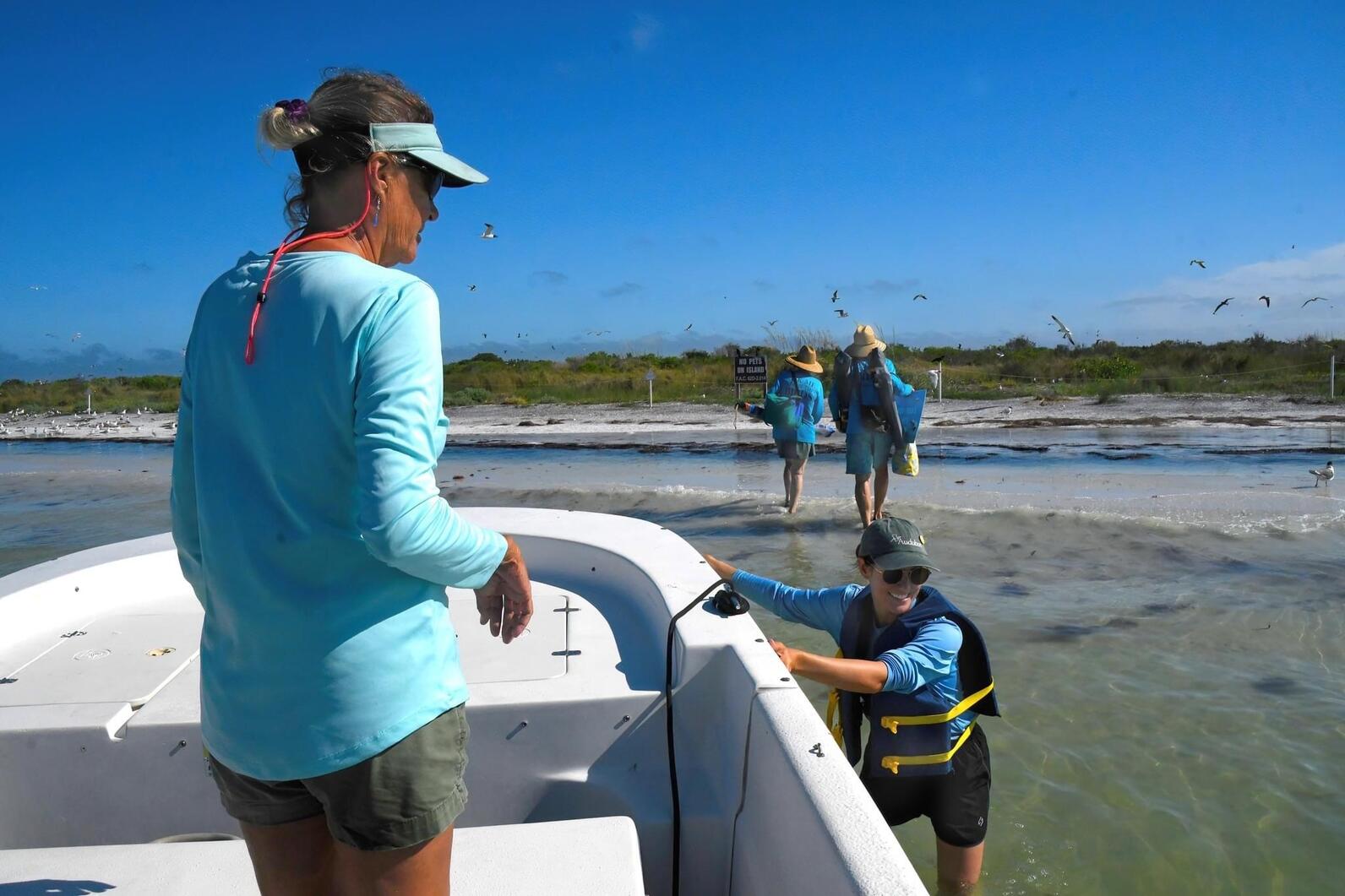
To ensure birds can nest safely and reproduce successfully, Audubon shorebird stewardship coordinators, alongside our dedicated steward volunteers, are responsible for posting and blocking off fragile areas and educating the public about the protected birds. [MOU1]
Although the duties of shorebird stewardship are fairly consistent across Florida’s nesting beaches, stewarding on Three Rooker Island is a unique experience. Our stewarding days start by loading the boat with everything we need for a six-hour shift on the island. First, we drop off stewards in their specific stewarding spots and anchor up, preferably in a location where the boat isn’t easily surrounded and blocked off by other anchoring boats. With our “Ask Me About the Birds” signs in the sand, chairs and umbrellas set up, and sunblock on, we keep our eyes out for any disturbances to the birds, including approaching people, dogs, kites, toys, or anything else that scares the birds.
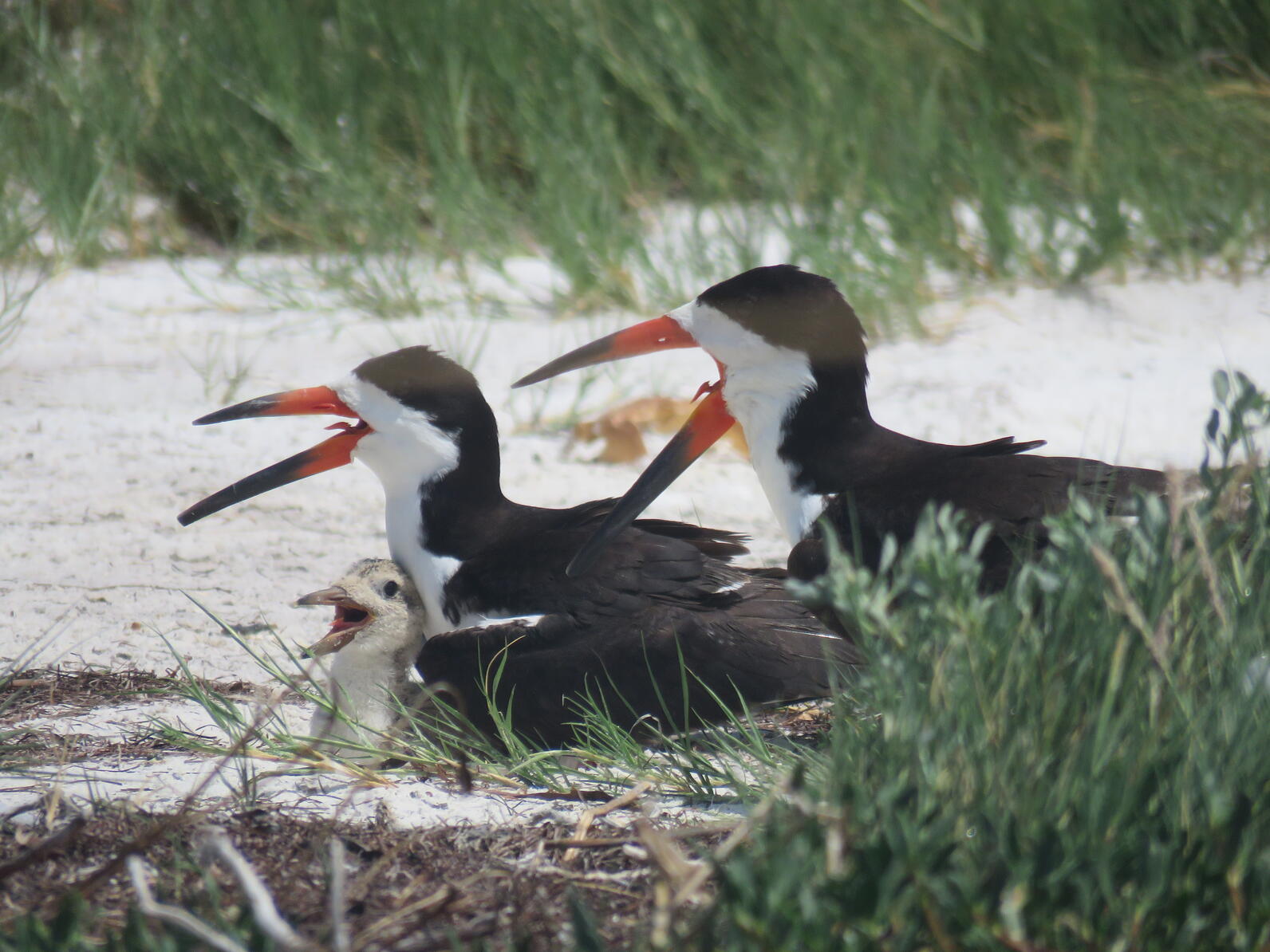
Nesting Island Disruptions
Three Rooker is known for nesting bird species that gather in large colonies along the shoreline once their chicks hatch. A sea of tern and gull chicks, fuzzy and loud, spills out of the nesting area and covers the sand as soon as the birds can walk. Hearing anything while you’re on the island becomes a challenge within the noisy chick chaos.
When birds incubate their eggs, we do everything possible to ensure they stay on their nests. If they spook, adult birds fly away, briefly leaving the eggs alone as easy prey for predators such as Laughing Gulls and Fish Crows. In addition to hundreds of Black Skimmers and thousands of terns nesting on these islands, there are also a few thousand Laughing Gulls that nest on the grassy areas of the islands.
The Invading Sea
Birds on Three Rooker also face high tides. Changes in tides affect all beaches, but because Three Rooker is now two small, narrow islands, an abnormally high incoming tide can wash away Black Skimmer nests near the eastern ends of each island. This can be common but forces the birds to exert more energy to renest in a different location within an already small nesting area.
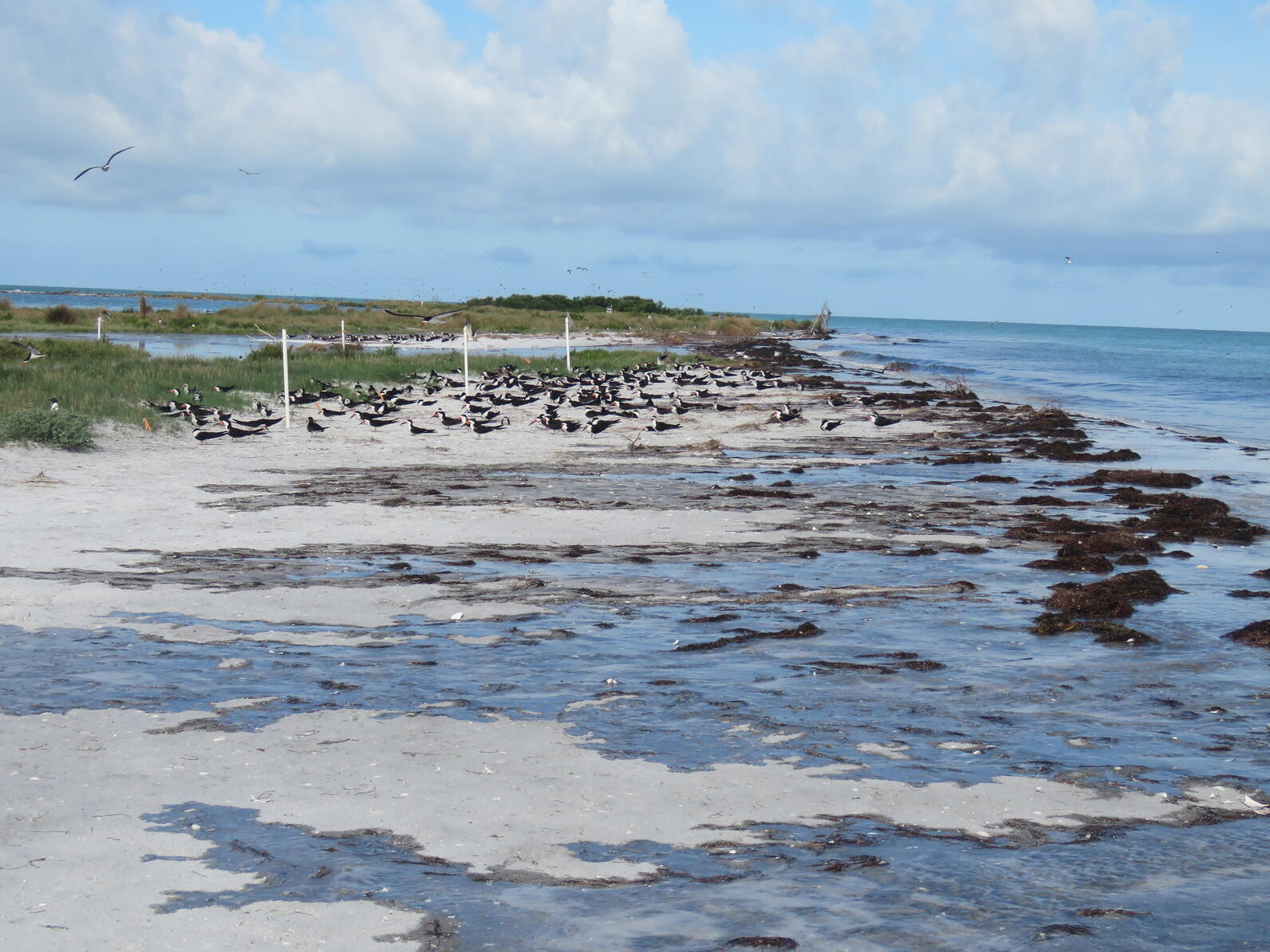
Storms are even more of a challenge because the islands are shrinking in size. Storms that produce heavy winds, high tides, and big waves can cause significant damage to these islands. We have seen tides and currents remove signposts and buoys we installed for the birds, inundate nesting habitat, and wash out entire nests and eggs.
More Threats from Climate Change
In recent months, high air and water temperatures have added another threat These birds can’t just fly indoors to enjoy air conditioning to cool off – they’re stuck out there under the hot sun, protecting eggs and chicks all day. The adults rotate, where one of them incubates the nest so the other can stretch their wings every once in a while, but even taking a dip in the water doesn’t help much when water temperatures are so high.
Join Us
Three Rooker Island teems with life. Stewarding on these islands is truly a unique experience and because of the numerous challenges the birds face, they need all the help and protection they can get. We encourage people to enjoy the beautiful beaches respectfully and mindfully. Please, share the shore whenever you’re on the beach!
To make our beaches safer for birds:
- Give nesting birds as much space as possible. Avoid walking through flocks of birds whenever possible.
- If pets are permitted on beaches, keep them leashed and well away from birds.
- Remove trash and food scraps, which attract predators that will also eat birds’ eggs and/or chicks.
- Do not drive on beach dunes or other nesting areas.
Want to join our flock? Volunteer opportunities are available. Learn more.

